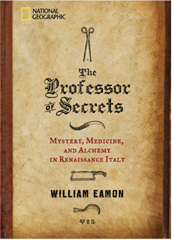 When the Bolognese surgeon Leonardo Fioravanti went “out into the world” in 1548 in search of the Magna Medicina (Great Medicine), he hoped to discover the ancient panacea that would cure all illnesses. Thirty years old, a medical school dropout, and an undistinguished local healer, Leonardo was naively curious and passionate about discovering the secrets of nature. He would go on to become one of the most controversial and combative figures of the Italian Renaissance. He challenged conventional medicine, reprimanded dukes and princes, and created an alternative medical movement—the “new way of healing”—that made him a celebrity and riveted the attention of the age.
When the Bolognese surgeon Leonardo Fioravanti went “out into the world” in 1548 in search of the Magna Medicina (Great Medicine), he hoped to discover the ancient panacea that would cure all illnesses. Thirty years old, a medical school dropout, and an undistinguished local healer, Leonardo was naively curious and passionate about discovering the secrets of nature. He would go on to become one of the most controversial and combative figures of the Italian Renaissance. He challenged conventional medicine, reprimanded dukes and princes, and created an alternative medical movement—the “new way of healing”—that made him a celebrity and riveted the attention of the age.
The Professor of Secrets is Leonardo Fioravanti’s story.
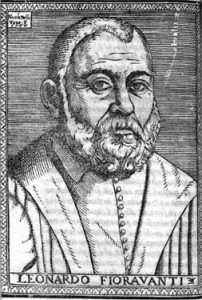 This portrait of Leonardo Fioravanti by the celebrated Venetian illustrator Niccolò Nelli, dated 1566, captures the surgeon as a rugged, battle-weary empiric.
This portrait of Leonardo Fioravanti by the celebrated Venetian illustrator Niccolò Nelli, dated 1566, captures the surgeon as a rugged, battle-weary empiric.To the common people, he was “that glorious man of new miracles.” A Venetian poet called him “an angel of paradise, sent by God to earth for the health and preservation of human life.” Yet fellow scientists and many physicians branded him a charlatan and a dangerous quack—and he served time in prison for poisoning his patients with his drastic cures. It was from his cell that Leonardo Fioravanti issued an audacious challenge: “that there be consigned to me alone twenty-five sick people . . . and an equal number to all the physicians of Milan. If I don’t cure my patients more quickly and better than they do theirs, I’m willing to be banished forever.”
Despite his theatrical character, Leonardo Fioravanti was a serious experimental scientist. A passionate alchemical adept, curious about everything, and devoted to empirical natural history, he was fascinated by the New World discoveries and experimented on tobacco and other exotic plants from America. In the court of King Philip II of Spain, he interviewed a Native American and learned about the people and cultures of the New World. Two centuries later, his drugs were still part of the standard pharmacopoeia of many parts of Europe. His famous “Artificial Balsam,” a wound treatment, even appeared in nineteenth-century editions of the American Dispensatory.
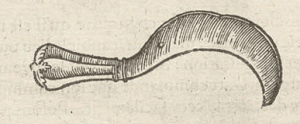 In this impeccably crafted tale, noted historian William Eamon chronicles the stranger-than-fiction life of surgeon Leonardo Fioravanti—the original “celebrity doctor”—whose saga opens a captivating window onto the scientific and medical practices of the late Renaissance. Eamon describes in vivid detail the unromanticized realities of the age, chronicling a time when the next devastating plague was just a flea bite away . . . when corsairs roamed the Mediterranean Sea . . . when barber surgeons bled their patients along with giving them a shave . . . when one could buy a ticket to view the dissection of a human body . . . and when scientists practiced a “chemistry-kit-in-the-basement” style of experimentation. The Professor of Secrets reconstructs the underworld of Renaissance science and brings to life the denizens of that lost world. Alchemists tending their furnaces, craftsmen at their workbenches, and surgeons daringly combatting wounds inflicted by terrifying new instruments of war all made up Fioravanti’s world. It is the story of modern science’s birth from the bottom up.
In this impeccably crafted tale, noted historian William Eamon chronicles the stranger-than-fiction life of surgeon Leonardo Fioravanti—the original “celebrity doctor”—whose saga opens a captivating window onto the scientific and medical practices of the late Renaissance. Eamon describes in vivid detail the unromanticized realities of the age, chronicling a time when the next devastating plague was just a flea bite away . . . when corsairs roamed the Mediterranean Sea . . . when barber surgeons bled their patients along with giving them a shave . . . when one could buy a ticket to view the dissection of a human body . . . and when scientists practiced a “chemistry-kit-in-the-basement” style of experimentation. The Professor of Secrets reconstructs the underworld of Renaissance science and brings to life the denizens of that lost world. Alchemists tending their furnaces, craftsmen at their workbenches, and surgeons daringly combatting wounds inflicted by terrifying new instruments of war all made up Fioravanti’s world. It is the story of modern science’s birth from the bottom up.
The Professor of Secrets is also a story about the crisis of orthodox medicine and its transformation in the Renaissance. Galenic medicine, the system taught in the universities and practiced by the majority of physicians, was incompetent to deal with the frightening consequences of devastating new diseases like syphilis, which disfigured, crippled, and eventually killed its victims. The door opened to unconventional healers like Fioravanti and to a host of other medical innovators and improvisers. Alchemy flourished, providing healers with fashionable new chemical drugs, some astoundingly potent in their effects. The medical marketplace was transformed by new methods of advertising drugs and by unorthodox medical systems. Traditional medicine faced a crisis from which it would never recover.
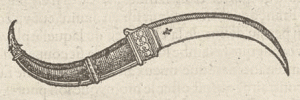 Based on extensive archival research and written for general readers as well as scholars, the book offers a new interpretation of the origins of modern science and the relationship between science and popular culture. The quintessential “professor of secrets,” Fioravanti, with his unquenchable curiosity and passionate experimenting, reveals what is most novel about Renaissance science. By looking through the eyes of one controversial participant in the momentous history of the rise of experimental science, the book tells that history from the perspective of contemporaries.
Based on extensive archival research and written for general readers as well as scholars, the book offers a new interpretation of the origins of modern science and the relationship between science and popular culture. The quintessential “professor of secrets,” Fioravanti, with his unquenchable curiosity and passionate experimenting, reveals what is most novel about Renaissance science. By looking through the eyes of one controversial participant in the momentous history of the rise of experimental science, the book tells that history from the perspective of contemporaries.
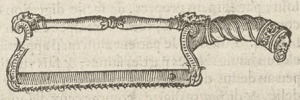 The Professor of Secrets reconstructs a fascinating character lost to history and offers us an alternative version of the Scientific Revolution, through the experiences of a man who lived on the margins of the great events and witnessed them with a penetrating vision. In telling this spellbinding story, Eamon offers a brilliant entry into the genre of popular history.
The Professor of Secrets reconstructs a fascinating character lost to history and offers us an alternative version of the Scientific Revolution, through the experiences of a man who lived on the margins of the great events and witnessed them with a penetrating vision. In telling this spellbinding story, Eamon offers a brilliant entry into the genre of popular history.







